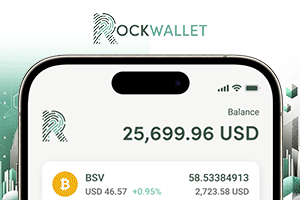|
Getting your Trinity Audio player ready...
|
A new report has predicted that the South Korean payment card market will record heightened growth metrics over the next five years in a push driven by changing consumer preferences.
According to the report by GlobalData, the payment card market will process transaction volumes of KRW 1.4 quadrillion (US$1 trillion) in 2025. The projected figure is a 3.8% rise from 2024 numbers, reflecting a steady growth pace since 2020.
Between 2020 and 2024, the South Korean payment card market had a healthy compound annual growth rate (CAGR) of 7.8%. While the CAGR is forecasted to slow down to 3.6% over the next five years, the report predicts transaction volumes to reach KRW 1.6 quadrillion in 2025.
A community reading of the report reveals key trends in South Korea’s card payments ecosystem. Analysts noted that card usage in commercial settings is focused on payments in POS terminals rather than cash withdrawals.
POS-based card payments are projected to soar to previously unseen highs before the end of the decade. A key driver is changing consumer preferences among South Korea’s tech-savvy population, with nearly 80% of Gen Z and millennials opting for digital payment platforms.
Furthermore, cash usage in South Korea has fallen to new lows amid frenetic innovation in local payment infrastructure. South Korean users have various payment options, from digital wallets, QR, and barcode payments, to other contactless payment alternatives.
“The South Korean payment card market is poised for sustained growth over the next five years, supported by increasing consumer awareness of digital payments and advancements in payment infrastructure,” said Shivani Gupta, GlobalData’s lead banking and payments analyst.
South Korean authorities are also streamlining the pivot to card and digital payment alternatives with several initiatives. One project by the Korea Payment Service Promotion Agency allows bus fares on Jeju Island to be paid with contactless credit cards, sidestepping the requirement for separate transportation cards.
Digital asset interest reaches new peak in South Korea
Amid the growth of card payments in South Korea, digital assets are gaining significant traction in the Asian country. The digital asset trading boom saw volumes surpass its stock market volume in 2024, piquing the interest of financial regulators in the country.
Furthermore, South Korea has lifted the ban on corporations selling digital assets for the first time in eight years. Currently, the Bank of Korea (BoK) is angling for stablecoin oversight amid a concerted effort by lawmakers to roll out a comprehensive stablecoin bill.Global QR code payment market to reach $61 billion in 2033
A new report has tipped the global QR code payment market to record seismic growth levels in the coming years amid a blistering pace of innovation and changing consumer preferences.
The global QR code payment ecosystem is projected to reach a valuation of $61.73 billion in 2033. The forecasted figure translates to a compound annual growth rate (CAGR) of 20% over eight years.
While the industry recorded an impressive growth spurt between 2020 and 2024, a raft of factors is poised to sustain a double-digit percentage CAGR for global QR code payments. The report cites increasing smartphone adoption worldwide, with the Global South leading the charge in recent years.
Apart from the rising smartphone adoption metrics, consumers are showing a preference for contactless payments. Since the COVID-19 pandemic, contactless payment options like QR codes and credit cards have soared across the globe as cash-based payments have declined steeply.
QR code payments are riding the wave of a changing landscape to record impressive adoption rates. The report notes that with QR codes, consumers need only smartphones to make payments, eliminating the need for a card terminal and other infrastructure.
Furthermore, QR code payments are typically 20% faster than other payment options in retail environments. While merchants cite the cost-effectiveness of QR codes, consumers say using dynamic codes for each transaction offers military-grade security for transactions.
In terms of regional distribution, the report projects the Asia Pacific (APAC) to be the global leader for QR code payments by 2033. North America and Europe will play second to APAC’s dominance at the turn of the decade, while Africa and Latin America are tipped to make significant strides.
Despite the glowing metrics, the report highlights potential security risks like technical tampering and other interoperability risks capable of affecting the projected growth of the industry.
A streak of steady adoption
While the private sector has made significant efforts to integrate QR code payments, governments are latching on to the trend. As early as 2022, Cambodia announced a unified QR code support for its Bakong payment system to promote financial inclusion and efficiency.
Meanwhile, a public consultation into the digital euro has revealed that potential users are angling for QR code functionalities in addition to P2P payments and budget management capabilities. QR codes will have to jostle with card payments, NFC-based Tap To Pay options, and blockchain-based digital wallets for dominance in the coming years.
Watch: New age of payment solutions

 08-22-2025
08-22-2025 





